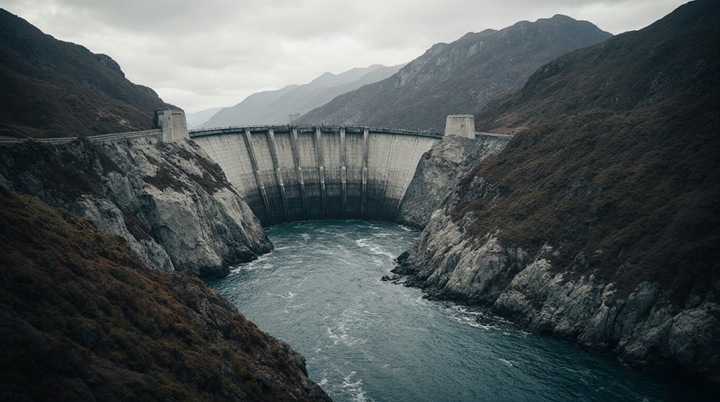The Cabinet of Ministers of Kyrgyzstan gave the green light to one of the most ambitious energy projects in the country’s recent history by signing investment agreements with OJSC «Central Asian Investment Holding». We are talking about the construction of the Kazarmansky hydroelectric power station cascade and the Kokomerensky hydroelectric power station cascade with a total capacity of 2217 MW – a figure that can radically change the energy landscape not only of Kyrgyzstan, but of the entire region. The meeting between Energy Minister Taalaibek Ibraev and representatives of the holding, which took place in early August, was the culmination of agreements reached back in 2024.

The project is amazing in its scale. It is planned to build three hydroelectric power stations on the Naryn River as part of the Kazarmansky cascade: Ala-Buginskaya hydroelectric power station with a capacity of 600 MW, as well as Kara-Bulungskaya-1 and Kara-Bulungskaya-2 with a capacity of 149 MW and 163 MW, respectively. Even more impressive is the cascade on the Kokomeren River, which includes three hydroelectric power stations with a total capacity of 1305 MW. These facilities, according to the plans of the Ministry of Energy, should become a powerful impetus for the country’s economy, ensuring energy security and creating new jobs, although some experts indicate that the main goal of the Barracks cascade of hydroelectric power stations may be the export of electricity to Afghanistan and Pakistan under the CASA-1000 project.
The Barracks cascade of hydroelectric power stations will be located on the Naryn River and include 4 hydroelectric power stations. The company OJSC «Central Asian Investment Holding» is interested in the construction of three of them:
- Ala-Buginskaya hydroelectric power station — 600 MW
- Kara-Bulungskaya-1 hydroelectric power station — 149 MW
- Kara-Bulungskaya-2 hydroelectric power station — 163 MW
- (Total cascade capacity — 912 MW)
The Cascade of Hydroelectric Power Station on the Kokomeren River will include 3 hydroelectric power stations:
- Karakol hydroelectric power station — 33 MW
- Kokomeren HPP-1 — 360 MW
- Kokomeren HPP-2 — 912 MW
- (Total capacity of the cascade — 1305 MW).
The investor, in turn, presented an impressive package of social obligations, which looks like a generous gesture of goodwill. For five years, from 2025 to 2030, the holding undertakes to allocate $5 million annually for social needs. This includes targeted assistance to children, modernization of the technical base of relevant ministries, participation in local government programs and even the construction of a strategically important 500 kV power transmission line with a length of 340 km, which will be transferred free of charge to the balance of the state.
It is noteworthy that in the official statement of the Ministry of Energy, which covers in detail all the benefits of the transaction, there is completely no mention of any research conducted or at least planned to assess the impact of hydroelectric power station cascades on the environment. This fact causes serious concern, because we are talking about the construction of seven powerful dams on two key waterways of Kyrgyzstan.
Projects of such a colossal scale inevitably entail irreversible changes in river ecosystems, affect biodiversity, animal migration routes, the condition of floodplain lands and even the local microclimate. The Naryn River is one of the main tributaries of the Syr Darya, and any interference with its hydrological regime may have transboundary consequences. Natural questions arise: how will life change in river valleys? What will be the fate of endemic species of flora and fauna? Have the risks for agriculture downstream been calculated?
Against the backdrop of clearly defined social bonuses and economic promises, the question of the potential environmental cost of these transformations remains outside the official agenda. The public and the independent expert community have not been provided with any data that would allow at least a preliminary assessment of the degree and nature of the impact of the hydroelectric power station cascade on the fragile mountainous nature of Kyrgyzstan. Thus, a large-scale project, presented as an absolute good, starts in the complete absence of public discussion about its long-term environmental consequences.
Alexander Eskendirov (Rivers.Help!)




